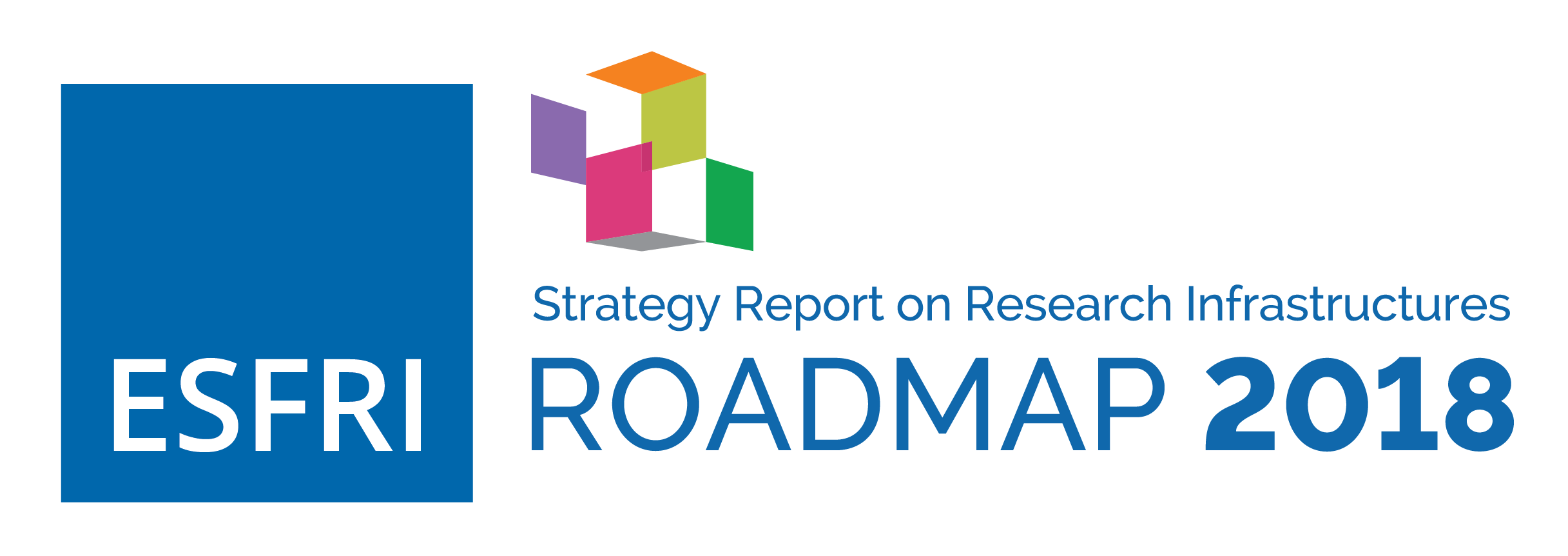Physical Sciences & Engineering
Research Infrastructures are integral part of the day-to-day activity of Physical Sciences & Engineering. Historically and today the PSE RIs are integrated in the way research is done in these disciplines, and major advances in knowledge are achieved by the research performed at RIs. However, the RIs are much more than research tools; they are truly Hubs of Knowledge & Innovation with a complete multidisciplinary approach and a systematic impact on many areas beyond Physical Sciences and Engineering.
To date there are few assessments of the socio-economic impact of RIs over their lifecycleThe importance of physics to the economies of Europe https://www.eps.org/default.aspxLong-Term Sustainability of Research Infrastructures, ESFRI Scripta Vol.2, October 2017 http://www.esfri.eu/sites/default/files/u4/ESFRI_SCRIPTA_TWO_PAGES_19102017_1.pdfSUSTAINABLE European Research Infrastructures https://ec.europa.eu/research/infrastructures/pdf/swdinfrastructures_323-2017.pdf. There are even fewer studies that take into account the wider impact on society; benefits which are not directly economic, such as health, a safer and fairer society, and a cleaner environment. Indeed, the methodology for such studies is still a subject of debate. However, the PSE RIs enable a vast range of science and engineering research that has an impact on almost all the identified areas of societal challenge, including health and the aging population; cleaner energy and a greener environment; better transport and improved cities; improved communications; national and personal security.
A major challenge that confronts scientists and policymakers is the increasing cost of the tools needed for achieving progress at the frontiers. Basic research as conducted today in these areas is truly international. About 30% (in some cases much more than 50%) of the users of the large and medium sized RIs are from outside the country where the facility is located. Support for the operations of these facilities has historically been provided by the host country or region with a policy of free and open access by the international scientific community and with beam-time and observation-time allocated based upon the merit of the proposed research.
Inside the PSE domain we identify three thematic subareas: ASTRONOMY AND ASTROPARTICLE PHYSICS, PARTICLE AND NUCLEAR PHYSICS and ANALYTICAL PHYSICS. In the following, the three areas will be described, with the corresponding RIs available, and the identified gaps and challenges for the near future.
Astronomy and Astroparticle Physics is evolving over recent years towards a multi-observatory approach. This new approach is contributing to our holistic understanding of the universe and its components to an unprecedented degree. Also beneficial and deep-rooted are the interactions with Particle Physics through the common theoretical framework and via multi-messenger, multi-instruments studies, covering an extraordinary range of electromagnetic wavelengths, different particles and most recently gravitational waves. Fast data analysis, together with an early alert network system, makes possible a direct observation of the same event by multiple observatories, thus elucidating the same phenomena with complementary techniques. The convergence of the different disciplines and different messengers is providing a very fertile approach and new results, which directly impact on the understanding of the physical world, from infinitely small to extremely large scales. The Astronomy and Astroparticle Physics community involves more than 12.500 scientistsThis number includes only the members of the International Astronomical Union.
Particle Physics aims not only at understanding the elementary constituents of matter, but also at building a coherent theoretical framework including all fundamental forces, which would allow us to understand the evolution of the universe from its earliest instants. Probing the limits of the Standard Model of particle physics and beyond, therefore involves understanding gravitation as well as elucidating the Dark Sector of the Universe: Dark Energy and Dark Matter. The tools to achieve this goal are manifold, from the highest energy particle colliders and highest intensity beams to extremely low background detectors and the observation of cosmic messengers at the interface with astrophysics and cosmology, as well as ultra-high-precision experiments at the frontier with atomic physics. Some 13.000 scientists are registered as users of CERN alone.
Nuclear Physics is the study of atomic nuclei and nuclear matter and of the fundamental forces responsible for their properties and behaviour. It aims at studying the fundamental properties of nuclei from their building blocks, protons and neutrons, and understanding the emergent complexity in terms of the strong interaction from the underlying quark and gluon and their degrees of freedom within Quantum Chromodynamics (QCD). This requires detailed knowledge of the structure of hadrons, of the nature of the residual forces between nucleons resulting from their constituents and of the limits of the existence of bound nuclei and ultimately of hadrons themselves.
The significant global effort in basic nuclear physics research involves around 13.000 scientists and support staff with funding of approximately 2 billion € per year. Investment in basic science results in long-term economic benefits. Advances in nuclear physics techniques and accelerator technology have made significant contributions to national and societal priorities, including new approaches in energy, national security, industry, and medicine. The discoveries and technical advancements that result from nuclear physics research make important contributions to other scientific fields and national and societal priorities. The forefront research facilities attract and train a next generation of scientists for research and national needs.
Analytical Physics includes the fine analysis of matter by scattering of beams and by spectroscopy, the nanofabrication of complex materials and systems and the in operando study of their functionalities. Europe is extremely competitive in this field with several world-leader Analytical Research Infrastructures (ARIs) facilities including sources of photon, neutron, electron and ion beams such as Synchrotron Radiation (SR) storage rings, Free-Electron Lasers (FELs), Neutron Scattering (NS), advanced Electron Microscopes (EM), Nuclear Magnetic Resonance (NMR), high-performance lasers (Ultra Short Pulse and High Intensity Lasers) and High Magnetic Fields (HMF).
The size of the current user community for Synchrotron Radiation facilities was estimated in 2017 as at least 24.000Brochure for the launch of LEAPS, November 13th 2017 https://www.leaps-initiative.eu/. The current user community for Free-Electron Lasers is in its infancy and is probably less than 1.000. The size of the current user community for Neutron Scattering in Europe has been estimated as over 5.577 distinct users in 2017, based on data provided by the facilitiesNeutron Users in Europe. Facility based insights and scientific trends - Brightness project https://brightness.esss.se/sites/default/files/deliverables/NEUTRON%20USERS%20IN%20EUROPE%20-%20Facility-Based%20Insights%20and%20Scientific%20Trends.pdf. The size of the current user community for Electron Microscopy in the physical sciences Europe was estimatedAs part of a survey of pan-European EM requirements for state of the art installations within the ESTEEM2 consortium. This figure excludes the life sciences and users of standard instruments who are likely to be at least equal to this number. It is important to recognise thatan increase in demand for transitional access between the ESTEEM and ESTEEM2, INFRA projects, the latter offering 3.300 user days over a four-year period indicates unsatisfied bandwidth and hence provides support for consolidated (and more efficient) infrastructures and for an overall expansion of EM provision as 5.000 excluding proprietary industrial users. This number is likely doubled if users in structural biology are considered because of the sudden proliferation of Cryo-EM users following technological leaps in recent years which enable unprecedented resolution. The current user community for Ultra Short Pulse and High Intensity Lasers in Europe mainly comes under the umbrella of the LaserLab Europe network which now undergoes its 4th edition. This has a population of about 3.500 individuals from about 50 laboratories across Europe. The ESFRI Landmark ELI (Extreme Light Infrastructure) offers significantly enhanced research opportunities to the global academic and industrial community of users and with the increased availability of state of-the-art beamlines, there is a potential for the growth of the scientific community. The size of the current user community for High Magnetic Fields in Europe can be estimated as 2.500 users and slowly growing based on the current number of users of the ESFRI Landmark EMFL (European Magnetic Field Laboratory). Adding up the numbers of users above quoted, a sum of approximately 45.000, including multiple users, is obtained. To the best of our knowledge, there is no quantitative study of cross-technique use across Europe, though the estimate of cross-facility use is of the order of 10%Estimates of dual-use of facilities have been made in Grenoble and at Harwell wherever there are co-located facilities – for example SR and neutron scattering facilities on the same campus.
There is a tendency to develop clusters of activity and to set up complementary facilities, both large and small in scale, around Analytical Research Infrastructures, notably at research campuses like in Grenoble, Hamburg, Harwell, PSI Villigen, Paris- Saclay, Trieste, Barcelona and Lund. This, in turn, attracts partnerships with universities and industries which create effective hubs for research and innovation across a very wide range of disciplines and can make very significant contributions to the local economy. In most cases, ARIs also develop technologies or products as bio-products or derivatives of their core technology development. For example, in the field of laser technologies, the following areas developed: i) remote sensing for airport security and food safety; ii) medicine and medical imaging, in particular related to cancer therapy; iii) photonic devices and new laser technologies. One of the resounding success stories is Cobalt Light Systems Ltd. an STFC spin-off company, which produces theInsight100 machine Insight100 machine https://www.cobaltlight.com/products/insight100series/, a bottled liquid screener that is now being used in most airports worldwide.
This Landscape Analysis does not cover the research facilities for engineering or purely applied research as they escape the exact definition of RI, often operating as test facilities or technology demonstrators. Nevertheless, there are areas - like the cleanrooms for Nanoscience and Nano-Engineering – that support both the applied industrial end users, and fundamental research programs – e.g. in the development of emerging technologies as Artificial Intelligence, Quantum Technologies and Computing.




